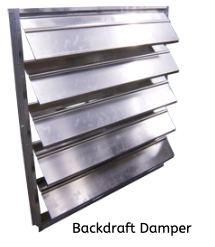Archives: Blogs
- Ed Neese
Eldridge is Expanding! As a manufacturer’s representative, taking great care of the customers that you serve and the principles that you represent has its rewards. We are proud to announce that Eldridge has been given the additional states of Arkansas, Louisiana and Oklahoma to represent products manufactured by Continental Fan Manufacturing, Innovative Air Technologies, and …
- Ed Neese
We have all heard the term “speed kills” as it relates to the dangers of driving a motor vehicle too fast. But when it comes to a general ventilation system, high air speed can “kill” or severely impact the ventilation system’s intended performance. In this article, we will discuss why Eldridge takes air speed into …
- James Ochoa
In the early 50’s, oil companies began exploring in the Gulf of Mexico with submersible drilling barges. When Superior Oil Company commissioned the Levingston Shipbuilding Yard to build its then state-of-the-art “W.M. Keck Sr.”, Eldridge designed the ventilation system and supplied the fans. From that point on, Eldridge has pioneered new methods and products for …
Eldridge Has Led the Way in the Evolution of Marine Ventilation Systems Read More »
- Clayton Settle
When replacing fans used for general ventilation customers sometimes ask if the replacement fans can provide more airflow without increasing the fan size. Before providing the customer an answer, we need to assess their fans and evaluate the options for adding more airflow. In this article, we will discuss the options for increasing airflow utilizing …
- Chris Schell
Most industrial building ventilation systems designed by Eldridge incorporate louvers and backdraft dampers. Both are used to modify the free flow of air, but they have different purposes. In this article, we will discuss similarities, differences and purpose of each as well as the characteristics used to select the proper one for an application. Similarities …
- Fred Mott
In the third and final part of this series, I am going to discuss how blower enclosures can be used for silencing noisy blowers. Enclosure Applications Sometimes silencers aren’t enough to silence a really noisy PD blower. An enclosure built around a PD blower provides additional noise attenuation if either the noise from the silencers …
Silencing Noisy Blowers Part 3: Blower Enclosures Read More »
- Fred Mott
In the first part of this series on Silencing Noisy Blowers, we discussed noise sources and frequencies. In the second part of this series, we will be discussing how blower silencers can be used to silence a noisy PD blower. Silencers Types The most common way to reduce PD blower noise is to use silencers. …
Silencing Noisy Blowers Part 2: Blower Silencers Read More »
- Fred Mott
Positive displacement (PD) blowers are very efficient at many types of processes such as vacuum processing, conveying, blending and aeration. They are vital pieces of equipment for the chemical, dairy, bulk handling, oil & gas and pulp & paper industries. Despite the critical role that a PD blower plays in many manufacturing processes, it …
Silencing Noisy Blowers Part 1: Noise Sources and Frequencies Read More »
- James Ochoa
Ventilation systems for marine vessels can be extremely complex. When they are not properly designed, vessel owners may see problems such as slamming doors from high negative pressure or excessive heat from low air flow. The most common cause of these problems is under or over estimating the static pressure of the system. In this …









